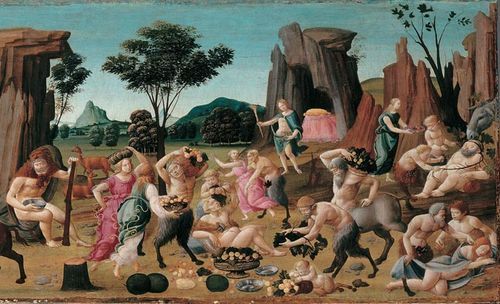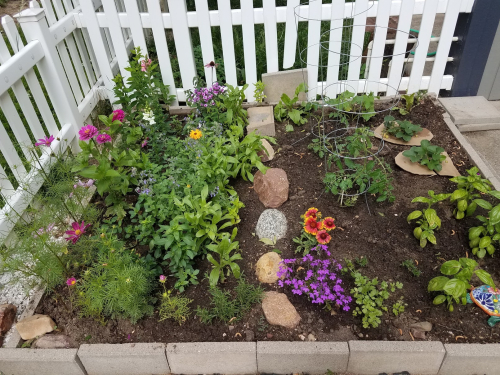Midori Snyder's Blog, page 19
July 23, 2018
Raymond Carver: This Morning
Here is a beautiful video and reading of Raymond Carver's somber poem "This Morning." The poem is read by Alessio Morglia and illustrated and animated by Alessandro Ferraro.
"All the things / I hoped would go away this morning. / The stuff I live with every day. What / I've trampled on in order to stay alive."
July 22, 2018
Donald Hall: One Road

(Photos by Peter Zelei/istockphoto and John Robert Shepard)
This happened across my internet-desk one morning and I stopped everything to read it. The poet Donald Hall wrote a beautiful and very poignant essay "One Road" about a journey he took post WWII with his very young bride driving from Oxford to Greece, by way of Yugoslavia. It is one of those effortless pieces of writing, that immediately draws you in and holds you captive to the end of the journey. It conveys the desire (and fearlessness) of the young to travel as a form of self discovery. It is also a detailed travelogue of a world now much changed, and a graceful reflection on a life that is only possible from a great distance (Hall wrote this essay when he was 84). Take a moment and enjoy.
"In December of 1952 my first wife, Kirby, and I left Vienna to drive through the Russian sector of Austria into Yugoslavia. At the border crossing, on a two-lane macadam road with no other car in sight, we stopped to present documents that permitted us to enter Marshal Tito���s country. Walking back to our car afterward, we met a man heading in the opposite direction, toward Austria. He had emerged from a big black car, and he looked important, like a diplomat or a capo. Seeing the initials of national origin on our small Morris convertible, he addressed us in English. I held in my hand our confusing travel directions. We asked the man if Zagreb was straight ahead.
He shrugged, and told us, ���There is only one road in Yugoslavia.���
July 21, 2018
The Return: Beautiful New Animation
This is a lovely piece of animation from Russian animator Ekaterinburg Natacha ��erny��ovo who studied animation in France. It is so charming and delightful. It has been a few years since I first saw this little video, and in between my first posting and now re-posting, I have become a grandmother, which has made this film all the sweeter.
July 20, 2018
The Hungry Mother: Kate Atkinson and Baba Yaga
I had one of those remarkable encounters while reading Kate Atkinson's Case Histories, who was describing in almost identical words an idea I had explored years ago in a poem. It is an ambiguous moment in motherhood, knitting power and love in a fierce and consuming way. It's awful really, selfish as it expresses a desire to reclaim the flesh once freely given, as though it had it been a loan and was needed back again ostensibly to keep the child as safe as she once was in the womb, but really, as a desire to recapture youth and vigor. Jung describes the trauma of birth as the "unhealed wound" in the child's life -- but I think there is an echo of the trauma in birth for the mother too. Nine months of intimacy, of quiet internal reflection, communication, a quickening joined in blood and flesh, a fullness that is suddenly followed by an emptying. There remains a longing, because everything that comes after is a leaving, a leaning out and away from all that primal connection.
I stumbled and then stopped and re-read this passage in Kate Atkinson's brilliant and brooding collection of intertwined murder mysteries, Case Histories.
"...she loved her youngest child with a ferocity that didn't always seem natural. Sometimes she wanted to eat Olivia, to bite into a tender forearm or a soft calf muscle, even to devour her whole like a snake and take her back inside her where she would be safe. She was a terrible mother, there was no doubt about it, but she didn't even have the strength to feel guilty."
Atkinson's passage lit up in my brain like lightning, recalling my own poem "Baba Yaga" -- which I wrote for my daughter more than a decade ago. It was eerie and familiar to read the two passages side by side.
"My daughter when you were small
How I wanted to eat you.
Cast off flesh of my flesh
I wanted to keep you in me,
Digest my fear of losing you as I swallowed
You whole, plumped and roasted.
Can you forgive the way I fretted over the oven
And took the measure of your
Wrists with my worried fingers?"
When I was pregnant with my daughter I developed anemia, which was discovered late in the pregnancy because I confessed to the ob that the sight of sand made me salivate, and I wanted to eat it. (I didn't tell him that I actually did eat a small finger full as the children were playing in it. ) That's when I learned about pica, a condition where anemic women, especially pregnant women crave dirt and sand. I also discovered that women in the South used to keep a little container of iron-rich red clay to eat during their pregnancy. The body's search for iron looks to the soil to enrich the shared blood grown thin. How like Baba Yaga, licking her iron tusks in pleasure, sucking marrow from the bones of bad children. Are all mothers always so hungry?
This is part of my daughter Taiko's reply to my Baba Yaga poem which we published as a duet. It is an answer from a young woman who had learned a thing or two about leaving and returning, about cooking and slaking a mother's hunger without turning first into the meal herself.
"Won't you be stunned to see,
in your weakened state, Old Woman,
that I have brought more than fish!
I will teach you, now that you have
burned your old recipes,
the new ones I remedied.
And I will uncover the hidden plants
I've stashed in my hair,
the worlds I have in my mouth,
the tattoos woven in my skin
and the sky I discovered in my breast."
"Old Woman, this will surely be your
finest meal."
Art: "Mother and Child" by Kathe Kollwitz, "Vasilisa and Baba Yaga" by Vania Zouravliov, "Baba Yaga" by Kinuko Craft.
July 19, 2018
Research Notes I: Culinary Arts In the 16th Century
In the process of updating the blog, I was delighted to re-discover an older post on one of my favorite subjects -- food! Especially the culinary arts of the Renaissance which rival those of early Rome. John Varriano's book is a treat for both cooks and artists.
Researching food is always fun, partially to make to make sure that I won't make any grievous errors putting in a dish that wasn't around until a century later -- or and even more important -- miss the chance to put in a dish that by its very design and substance is more fantastic and magical than anything I could have imagined. Maybe that is part of the allure of research -- discovering that the facts are so much more satisfying to write about than the imagined ones.
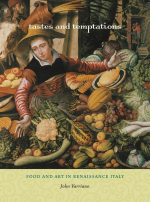 So to this lovely little book: Tastes and Temptations, Food and Art in Renaissance Italy by John Varriano -- an excellent examination of the relationship between the artists of the Renaissance and the great chefs of the same period. Varriano demonstrates the ways in which cooks and artists relied more on imagination in the production of their work (and often drawing inspiration from each other), and shared an affinity for ritual and the symbolic value of forms to represent the sacred, nature, and the senses. They were exercises in artifice to make aesthetic statements -- a salmon mousse molded to resemble a goat (so as to confuse and heighten the experience of eating one thing while imagining another) or an exquisite Ovidian scene of diners painted at the bottom of one's soup bowl. And in other ways, the relationship was organically close -- the artists creating still lifes using paints whose binding agents were mainly egg and lard.
So to this lovely little book: Tastes and Temptations, Food and Art in Renaissance Italy by John Varriano -- an excellent examination of the relationship between the artists of the Renaissance and the great chefs of the same period. Varriano demonstrates the ways in which cooks and artists relied more on imagination in the production of their work (and often drawing inspiration from each other), and shared an affinity for ritual and the symbolic value of forms to represent the sacred, nature, and the senses. They were exercises in artifice to make aesthetic statements -- a salmon mousse molded to resemble a goat (so as to confuse and heighten the experience of eating one thing while imagining another) or an exquisite Ovidian scene of diners painted at the bottom of one's soup bowl. And in other ways, the relationship was organically close -- the artists creating still lifes using paints whose binding agents were mainly egg and lard.
I started reading this study in part because I needed to know if the roasted peacock I placed in a scene was acceptable -- and then discovered after reading that I had in fact grossly under sold it in the scene. One of the great chefs of the mid 1500s, Bartolomeo Scappi, known for dramatic and delectable skill (a kind of culinary sprezzetura -- a word that needs a post of its own to explain) enjoyed cooking that "vainglorious creature," using an extravagant assortment of spices and a method of preparation that reassembled the bird with metal rods and reattached its feathers in order to serve it up come se fosse vivo-- "as if it were still alive." So yes -- my peacock is in. With bells and feathers and beak.
But this would have been one of many, many dishes. Consider this "simple meal" prepared by Scappi and his army of cooks -- a modest three course feast on a day of abstinence (meatless Friday) with forty guests, and "the first two courses consisted of fifty dishes served on four hundred pieces of gold, silver, and maiolica tableware," which were then followed by twenty-seven desserts served in two hundred and sixteen bowls and dishes. And..there were "six edible statues" of nymphs, exotic creatures and mythological inventions, "the first made of sugar; the second of butter; and the third, pasta." The meal then ended with scented toothpicks and posies of silk flowers with gold stems for each guest.
The hardest part now of writing that scene is going to be to reign in the desire to over indulge -- as artists and cooks are able to do -- so the reader won't somewhere midway through the scene, throw the book down and go in search of something good to eat. Like a pan of brownies or an entire brie with slices of pear, or a half a pound of prosciutto and green olives. Sigh...now I am hungry.
Art: Paolo Veronese, Wedding at Cana; Bartolomeo Passarotti, The Baker Prearing Pies; Bartolomea di Giovanni, The Wedding of Thetis and Peleus; Vincenzo Campi, Fruit Seller.
July 12, 2018
How to Celebrate More Than Ten Years on the Blog?
If you can't find a favorite post it is probably because I am redoing the images for it, cleaning out the dead links, updating the information ...or deciding to move it to a new section of the website altogether. Basically, there is an overhaul going on here....should take about a few weeks to complete...but I am kinda digging it. It's like cleaning out those closets of clothing that doesn't fit anymore and mending the old pieces you love and want. So bear with me...this is a good thing indeed.
July 3, 2018
The Spine of a Novel That Tends to the Eternal
���Traveling is a brutality. It forces you to trust strangers and to lose sight of all that familiar comfort of home and friends.You are constantly off balance. Nothing is yours except the essential things: air, sleep, dreams, sea, the sky - all things tending towards the eternal or what we imagine of it.��� --Cesare Pavese
The above is one of my favorite quotes as it seems to suggest to me not only the physical journey but the deeper emotional well of any good narrative of self-discovery. It's the foundation or backbone on which so many wonderful novels I have read over the years seem to rest. I am drawn to them because such a structure is how I tend to think when constructing the shape of a story or novel; our separation from the familiar, our trust in strangers, the off-balance, the journeying, the transformations and the leaning into all things eternal.
Here is a short list of my favorite novels that I have reviewed over the last ten years that in many ways embody the sensibilities of Pavese's brilliant observation:
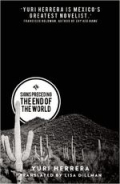 Signs Preceding the End of the World by Mexican author Yuri Herrera is an amazing and haunting work. A young woman Makina is given a note from her mother to take to the older brother who has disappeared into the North. Along the way, Makina encounters a series of ambiguous helpers: the thug who mysteriously owes her mother, the trading of favors with a coyote, the strangers who pull her along the road, the rivers, and mountain passes, and then the cities themselves, full of mazes, flags, and shops until -- almost miraculously, she arrives at a place to discover her brother, changed utterly. Read more > >
Signs Preceding the End of the World by Mexican author Yuri Herrera is an amazing and haunting work. A young woman Makina is given a note from her mother to take to the older brother who has disappeared into the North. Along the way, Makina encounters a series of ambiguous helpers: the thug who mysteriously owes her mother, the trading of favors with a coyote, the strangers who pull her along the road, the rivers, and mountain passes, and then the cities themselves, full of mazes, flags, and shops until -- almost miraculously, she arrives at a place to discover her brother, changed utterly. Read more > >
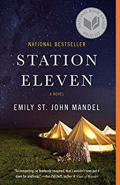 Hillary St. John Mandel's remarkable Station Eleven is an apocalyptic (and post apocalyptic) novel that despite its contemporary setting and clean, modern prose, reads like the middle passage of a good fairy tale, with its dangerous but transformative journey through the dark woods. The story is book-ended at the beginning by the moment the world was changed when a virus wipes out most of humanity, and then, just before the end, when we return to the opening events of the narrative, the death of an actor from a heart attack hours before the virus descends. Read more >>
Hillary St. John Mandel's remarkable Station Eleven is an apocalyptic (and post apocalyptic) novel that despite its contemporary setting and clean, modern prose, reads like the middle passage of a good fairy tale, with its dangerous but transformative journey through the dark woods. The story is book-ended at the beginning by the moment the world was changed when a virus wipes out most of humanity, and then, just before the end, when we return to the opening events of the narrative, the death of an actor from a heart attack hours before the virus descends. Read more >>
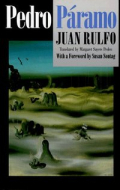 Pedro Paramo by Mexican author Juan Rulfo' opens with a spare compelling prose, like a darkly lived fairy tale, hinting at the ghostly journey to come in an altered landscape. In late August Juan travels to Comala, a town so hot and dry, popular myth has it that "when people die and go to hell, they return for a blanket." Juan is greeted by Eduviges Dyada, an old friend of his mother's, and quickly learns that Pedro P��ramo, the father he is seeking, is long dead. But the conversation takes an odd turn, as Eduviges tells Juan that his mother had told her just that day to expect him. When Juan tells his mother is dead, Eduviges merely shrugs and responds, "So that was why her voice was so weak." Read more > >>
Pedro Paramo by Mexican author Juan Rulfo' opens with a spare compelling prose, like a darkly lived fairy tale, hinting at the ghostly journey to come in an altered landscape. In late August Juan travels to Comala, a town so hot and dry, popular myth has it that "when people die and go to hell, they return for a blanket." Juan is greeted by Eduviges Dyada, an old friend of his mother's, and quickly learns that Pedro P��ramo, the father he is seeking, is long dead. But the conversation takes an odd turn, as Eduviges tells Juan that his mother had told her just that day to expect him. When Juan tells his mother is dead, Eduviges merely shrugs and responds, "So that was why her voice was so weak." Read more > >>
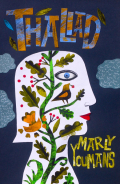 Thaliad by Marly Youmans offers a healing balm to the swath of nihilistic post-apocalyptic fiction. Told in free verse reminiscent of heroic epics (Homer meets Gerald Manley Hopkins), Thaliad recounts the aftermath of a fiery apocalypse and the perilous journey of a band of children led by a girl whose prophetic visions are guiding them, hopefully to a sanctuary on the edge of a lake where they must confront the challenges of re-creating the world illuminated by hope and love. In this stunning narrative the eternal is always close at hand in violent and transfigurative powers. Read more >>
Thaliad by Marly Youmans offers a healing balm to the swath of nihilistic post-apocalyptic fiction. Told in free verse reminiscent of heroic epics (Homer meets Gerald Manley Hopkins), Thaliad recounts the aftermath of a fiery apocalypse and the perilous journey of a band of children led by a girl whose prophetic visions are guiding them, hopefully to a sanctuary on the edge of a lake where they must confront the challenges of re-creating the world illuminated by hope and love. In this stunning narrative the eternal is always close at hand in violent and transfigurative powers. Read more >>
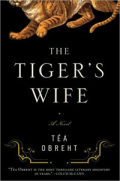 The Tiger's Wife by Tea Obrecht is an astonishing novel, set in what was once Yugoslavia over the course of WWI, WWII, and the recent wars that resulted in its dissection into new territories. War forms an continuous backdrop throughout the novel, often as a distant but deeply felt anxiety and sometimes exploding on the community. Tavelling is a hazard as boundaries shift with the conflicts and "our city," or "our fields" abruptly become someone else's property. Identities shift too as the long married wife whose origin, faith, or language suddenly mark her as an enemy to the new state. Nadia, the novel's protagonist, is a young pediatrician who sets out on a perilous journey, crossing newly minted borders to understand the reasons for her beloved grandfather's strange disappearance and his death alone in a remote village. Read more > >
The Tiger's Wife by Tea Obrecht is an astonishing novel, set in what was once Yugoslavia over the course of WWI, WWII, and the recent wars that resulted in its dissection into new territories. War forms an continuous backdrop throughout the novel, often as a distant but deeply felt anxiety and sometimes exploding on the community. Tavelling is a hazard as boundaries shift with the conflicts and "our city," or "our fields" abruptly become someone else's property. Identities shift too as the long married wife whose origin, faith, or language suddenly mark her as an enemy to the new state. Nadia, the novel's protagonist, is a young pediatrician who sets out on a perilous journey, crossing newly minted borders to understand the reasons for her beloved grandfather's strange disappearance and his death alone in a remote village. Read more > >
July 2, 2018
How I See Myself In the Stones
Every morning we hike at sunrise to watch the sun lift in the east and light up the Flat Irons in the west. The path is full of river stones and rocks. And at this one, I stop and say hello -- for it seems to me a perfect description of my working life: weaving, writing, and knitting. And I think, yes, even broken into three fragments, it is still whole.
July 1, 2018
Moving to the Front Range of the Rocky Mountains
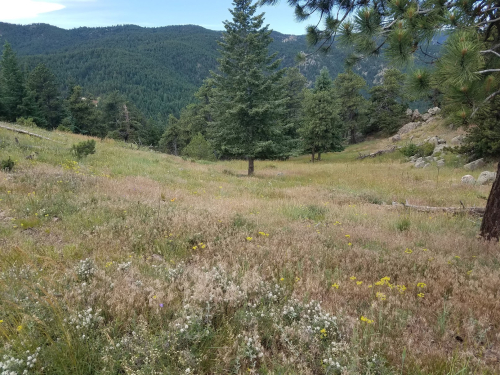
The last four months have been pretty extraordinary for my husband and I as we made the decision to pack up twelve years of life in the deserts and mountains surrounding Tucson for Boulder, Colorado surrounded by evergreen forests, the Flat Irons of the Rocky Mountain Front Range, and the rolling fields of shoulder-high grass and wildflowers. We also exchanged the stable weather of Tucson with its continuous clear blue skies (except for the monsoons which offered some excitement in the summer storms) for the hourly changing weather of Boulder, so close to mountains that every day provides spectacular cloud formations, storm clouds, and clear skies, rumbling and then soft nights. And yes, the occasional summer hail! The car has already been baptized with small round dents.
We moved from 2,100 square feet to 1,100 square feet. We did our best to lighten our loads, get rid of things that long ago should have been passed on, and pared down to be able to squeeze ourselves into two bedrooms -- one reserved as a shared offer. A kitchen that while functional, is a too small for more than one occupant at a time to work in. On the plus side, after years of stone gardens and prickly plants -- we now have a small backyard with a flower garden, tomato plants, zucchini, cucumbers, basil and other herbs.
Our reason for coming was to join up our part of the clan with my daughter, her husband, and two beautiful grandchildren. It is so lovely to live a mere five-minute walk from them, and we do spend a good deal of time together having fun. My daughter has an even smaller apartment, so we say "two small kitchens, one big meal." She's a baker, and her pies are quite legendary. I babysit a lot right now to help my daughter have the time to finish her dissertation this year in Spanish and Portuguese medieval literature. Our son in law is otherwise known as "Mr. Boulder" because he has a dynamic and fun job in management of Boulder's tourism. He knows everything about the city and is always sending us off to see/eat/drive through/visit/enjoy some new aspect of Boulder. And in this small mountain town (whose growth is constrained by strict laws protecting open space -- and the mountains) everything is roughly 8 minutes away from anywhere.
We are adjusting -- to a summertime evening that stays light until 10 o'clock, to Boulder's crowded streets, but also expansive street malls with buskers, splash pools for children, a river walk alongside the fast flowing Boulder Creek through the city, miles and miles of bike paths throughout the city, and amaaazing grocery stores. We are still looking for a martial arts home to train in and a lap pool to swim in.
But the best, is the ten minute drive to a one of 800 mountain hikes up in the mountains. Those views, those wild flowers, the calming effect of the tree shaded trails and the sudden burst of sunlight on a summer snow-capped mountain.
June 18, 2018
Happy Anniversary to Us!
It was our 39th wedding anniversary on June 16th. We were married in 1979 but we met in 1972. It just took me a long time to say yes, though he asked after two weeks. Here we are 1972 -- I'm 18 and he's 21 -- having fun in a photo booth. So many years and still so much joy.
Midori Snyder's Blog
- Midori Snyder's profile
- 87 followers







